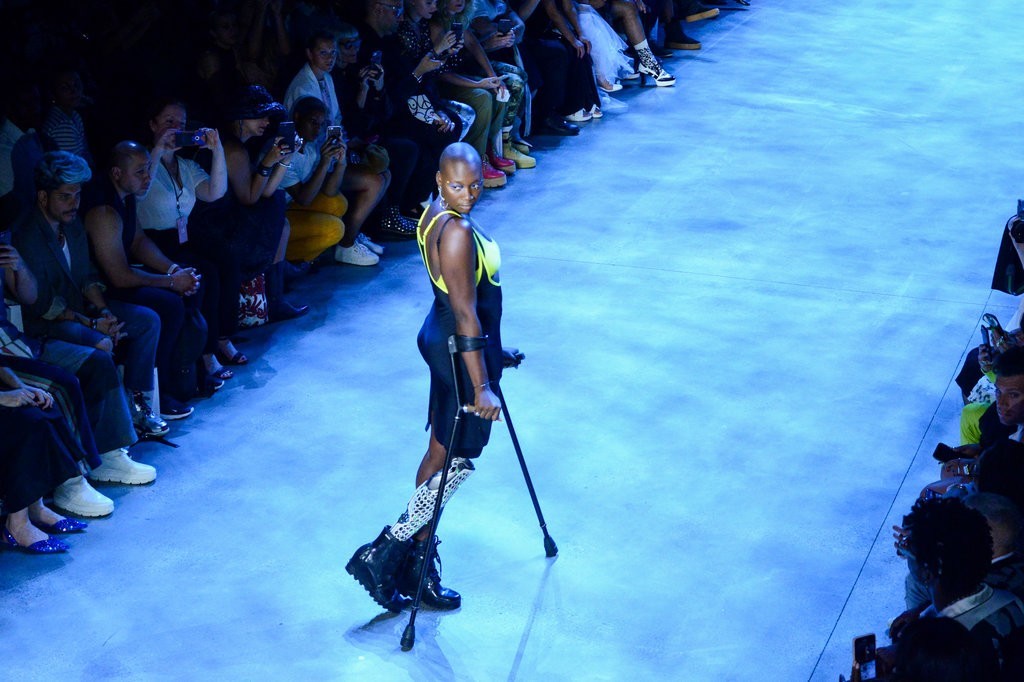The Limits of Fashion's Inclusivity
Source:The New York Times
From:Taipei World Trade Center Liaison Office in Chennai
Update Time:2019/01/01

Mama Cax, on the runway at the spring 2019 Chromat show during New York Fashion Week.
Beauty is being redefined - this is something on which most of us can agree. The era of the white, thin, Eurocentric model as the only embodiment of glamour is gone. The runways have embraced diversity of skin, shape and age. But for one group they still lag behind: people with disabilities.
Now a new book, “Portrait Positive,” featuring images of 16 women with facial disfigurements by the British photographer Rankin, is aiming to change that. The book’s creator, Stephen Bell, managing director of the events company Epitome Celebrations, describes himself as having a “visible difference”: When he was born, four fingers on his right hand were fused together. To increase independence and mobility, his index finger was surgically separated in childhood. Yet he reached adolescence without visible role models or an understanding of his disability, he said, feeling isolated, insecure and unsure of what he could be and do.
By chance, 10 years ago Mr. Bell, now 39, came across images online of people who looked just like him, and via the warrens of the internet discovered he had been born with a condition called syndactyly: joined digits that can result in webbing of the skin. It is the second most common congenital hand condition and occurs in around one in every 1,000 births, yet neither Mr. Bell’s parents nor his doctors provided him with the label or language to describe what had happened.
The idea for “Portrait Positive” was born two years ago when Mr. Bell approached the London-based designer Steven Tai with the idea of using fashion as a framework to raise questions about codes of appearance. Mr. Tai was keen to participate, because he had “always believed in the acceptance and celebration of one’s insecurities,” Mr. Tai said, and hoped that “this project not only opens up the standards of beauty, but also lets these women know that they are beautiful.”
The book will raise funds for Changing Faces, a British-based charity that supports and represents children, young people and adults who have a visible difference to the face, hands or body, whether present from birth or caused by accident, injury, illness or medical episode. The project will also exists outside of the book format; Brenda, Chloe and Raiché, three women who had their portraits taken by Rankin, walked in Mr. Tai’s London Fashion Week presentation.
The fashion industry has a difficult history with disability. It has rarely considered people with disabilities to be valuable consumers (despite the fact there are estimated one billion worldwide), while simultaneously exploiting the objects and devices associated with the disabled.
A Steven Klein cover of Interview magazine, for example, had Kylie Jenner photographed in a gold wheelchair. Helmut Newton famously photographed Nadja Auermann modeling stilettos, leg braces, canes and a prop wheelchair.
There have, however, been moments that suggested change. Aimee Mullins, a double-amputee model, appeared on the Alexander McQueen catwalk in the spring 1999 show; Mama Cax, an amputee, modeled on the runway for Chromat recently at New York Fashion Week (and was featured in Teen Vogue’s current disability-focused series); and Olay’s new #FaceAnything campaign features the model Jillian Mercado, who has a disability. “Portrait Positive” is part of this continuum.
Source : https://www.nytimes.com